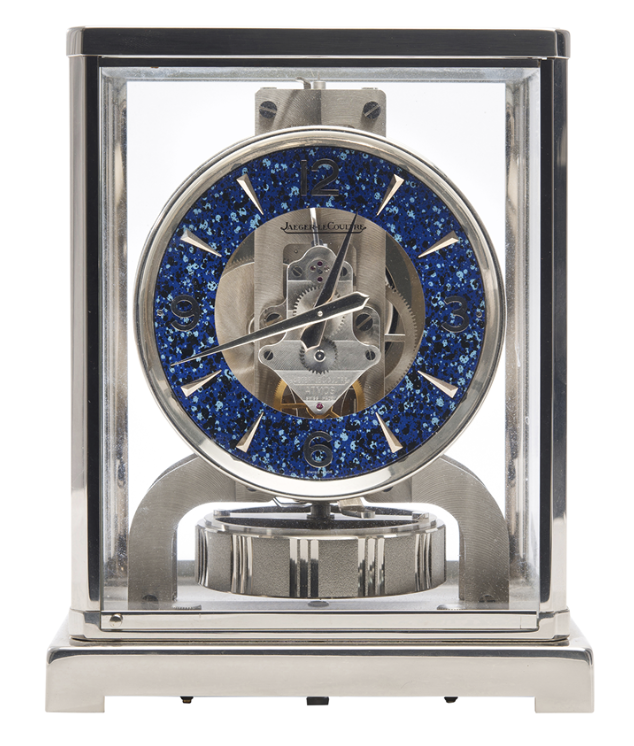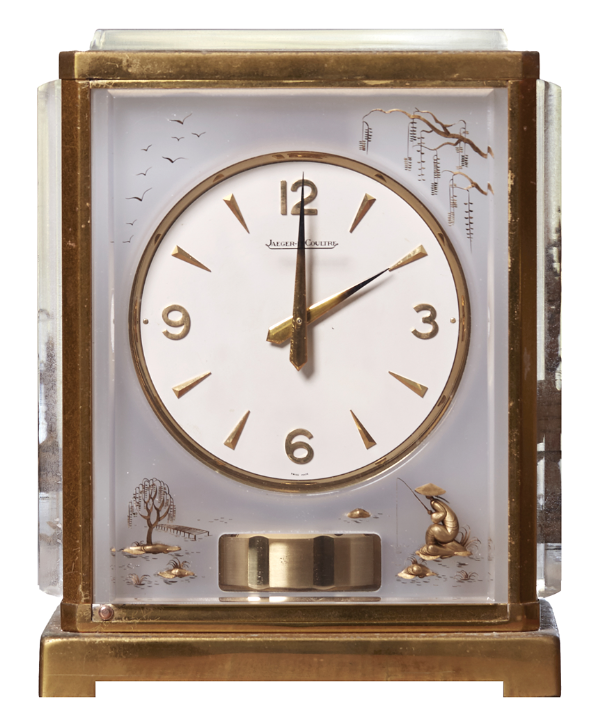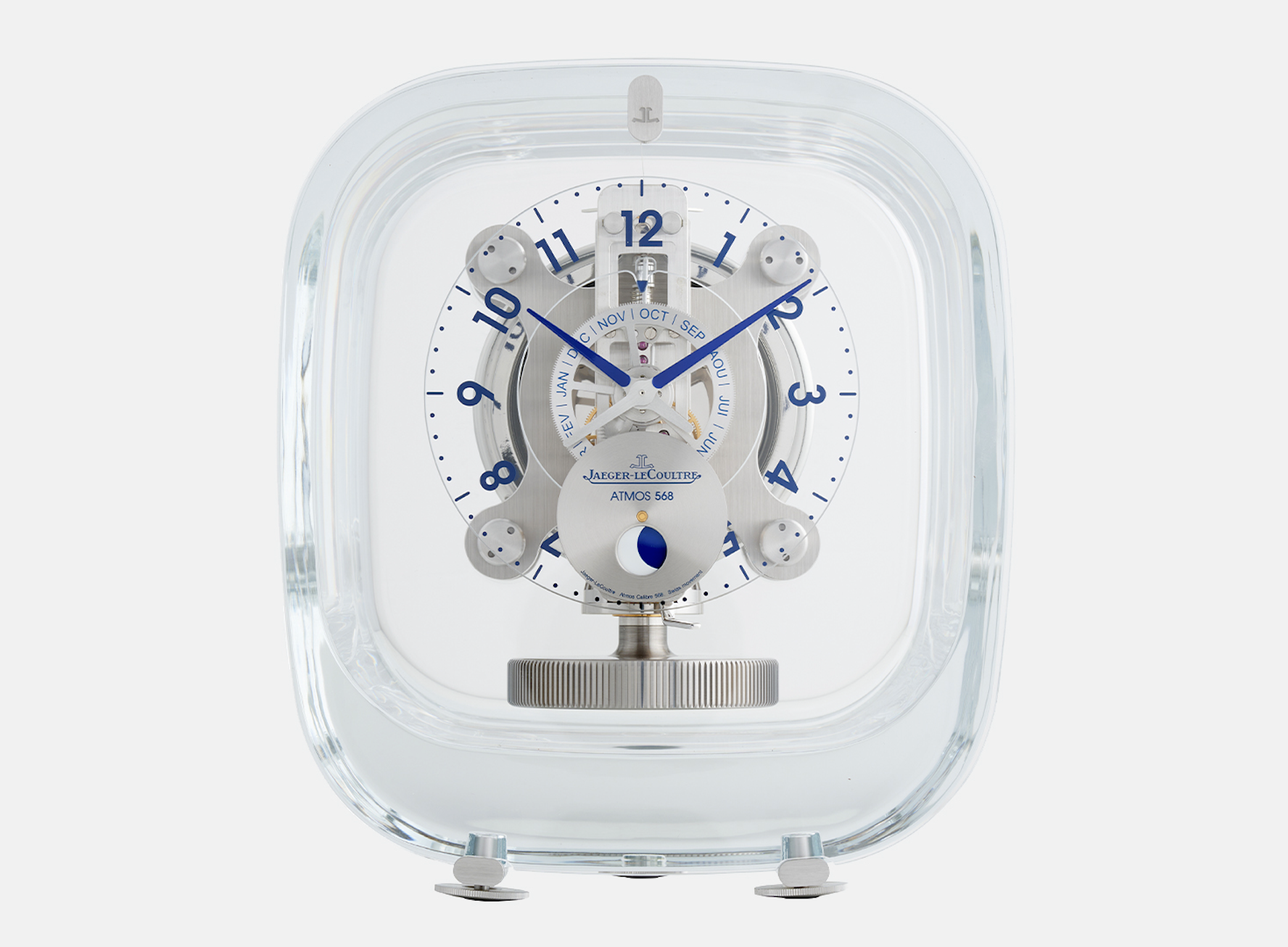When you discover that an ingenious clock winds itself on air alone, your instinctive reaction may well be to exclaim, Oh Lord! The horological marvel in question is Jaeger-LeCoultre’s patent of an atmospherically pressured and temperature change powered clock, the mystical Atmos.
The idea of a clock powered by perpetual motion, without regular reliance on human intervention, was first brought to bear by Dutch engineer Cornelis Drebbel as early as the 17th Century. From there, the concept evolved through modifications and alterations by successive visionary clockmakers and engineers. Fast forward a few centuries, and the Beverly Clock stands out as a notable example in the pursuit of a mechanism driven by daily variations in temperature and atmospheric pressure. This namesake clock, installed in the Department of Physics at the University of Otago, Dunedin, New Zealand has been running continuously since Arthur Beverly constructed it in 1864 – despite never having been manually wound.

1928 was a breakthrough year for wind power (of sorts) as Swiss engineer Jean-Léon Reutter also yearned for his own version of a working, dependable clock that would run forever through perpetual motion – no manual winding intervention. His creation was a non-commercial prototype, which predated the Atmos name, but is now known unofficially as Atmos 0. The Atmos 0 relied on a more sophisticated mechanism than the previous single diaphragm that expanded and contracted with temperature changes to wind. Reutter’s design included a special device that would power his clock independently, using a substance that would react to the most sensitive changes in temperature and atmospheric conditions. The secret potion behind perpetual motion lay in that toxic, silvery, shiny chemical element: mercury. He encased the quicksilver in a long metal cylinder called the bellows. This bellows acted like a lung for the clock, expanding and contracting with minuscule atmospheric and temperature fluctuations. In doing so, it created a gentle rocking motion that powered the clock as needed, allowing it to keep time safely and reliably. Reutter achieved his lofty goal, a revolutionary design that ran on thin air which surely appeared to defy logic – one would have been forgiven for believing horological sorcery was at play here.
Yet far from being an overnight sensation, this early 1930s prototype (the Atmos 0) was met with a lukewarm reception, and Reutter’s production remained limited to small numbers. It was a chance encounter by a manager from the venerable Swiss watchmaking company LeCoultre that would alter the legendary Atmos clock’s trajectory. The story goes that, while on display in a Parisian shop window, the Atmos caught the discerning eye of the manager. Being an horological man, he was naturally mesmerised by the Reutter Atmos and purchased it from the shop merchant. That serendipitous, impulsive buy would eventually lead to a deal being struck. Reutter sold both the licence and the patent to the LeCoultre Watch Company.

Coincidentally, during this period, LeCoultre was engaged in collaboration and talks of a merger with Parisian watchmaker Ed Jaeger. In 1935, the two companies pooled their resources, knowledge, and expertise to form what would become the powerhouse often referred to today as the “Watchmaker of Watchmakers”, Jaeger-LeCoultre. JLC poured considerable investment, collective research and development into Reutter’s Atmos Clock.
After a few false starts, and once confident that all compromises in precision had been eliminated, major production was given the go ahead. In 1939, the newly revamped Atmos Clock was launched under the Jaeger-LeCoultre name exclusively. Production began in earnest, and the legend we know today was born. Since then, the intrigue surrounding this technical horological jewel has only grown – not simply as a timeless precision instrument, but also as a symbolic object, often gifted by the Swiss government to dignitaries, presidents, and popes. Over the years, JLC has introduced a variety of models each reflecting shifting aesthetic tastes in design- from the classic to the minimalist and including limited editions featuring artistic collaborations. The latest version of the Atmos, known as the 568, is an ice-cold reimagining of the icon by Australian designer Marc Newson.
The term “design icon” is bandied about liberally these days, but in the case of the Atmos clock, it is no exaggeration. With its enduring ingenuity and elegant proportions – underpinned by a sure and silent mechanism – this timepiece has charmed its way into our psyche and senses since its debut. Finding a clock as singularly unique as the Jaeger-LeCoultre Atmos? I dare say you’d “be waiting for this moment, all your life…”
By Patricia Kontos, Senior Timepieces and Jewels Specialist
Top Image: Jaeger-Lecoultre Atmos 568 by Marc Newson, a Baccarat crystal Atmos clock with month and moon phases.
August 2025
